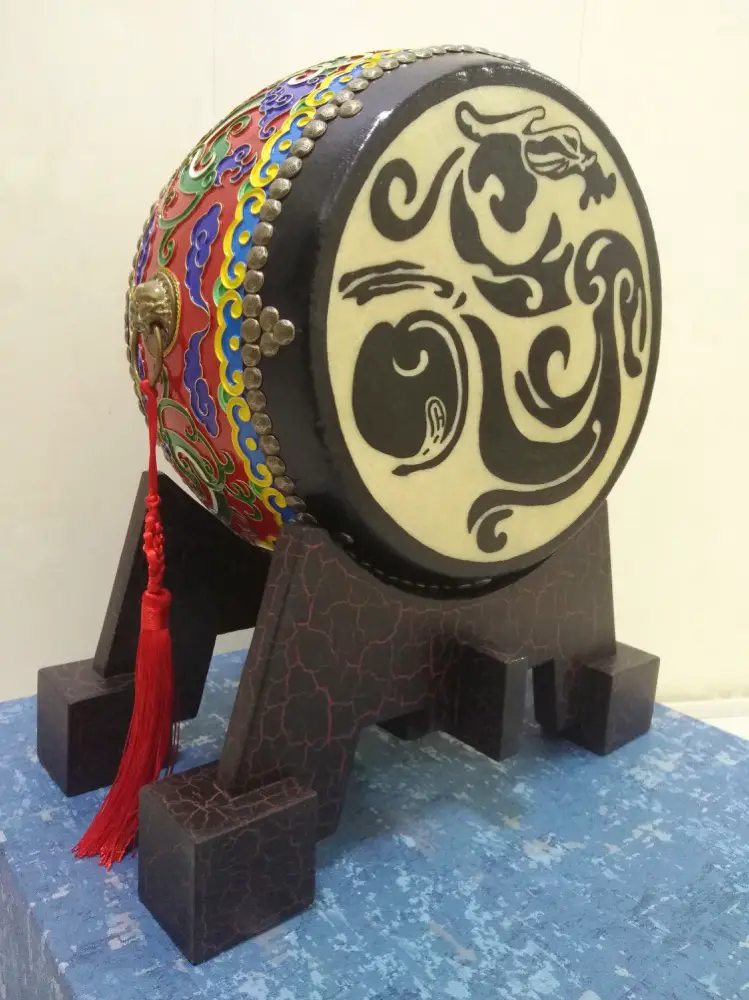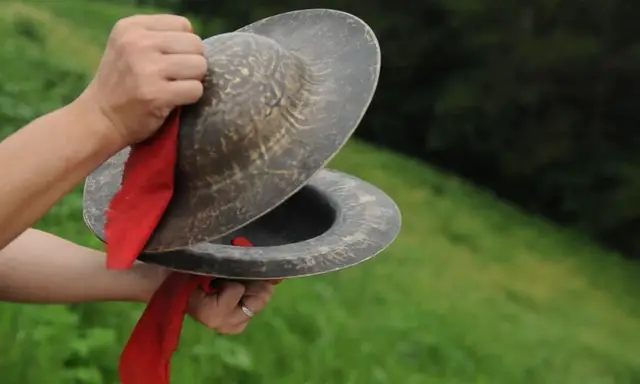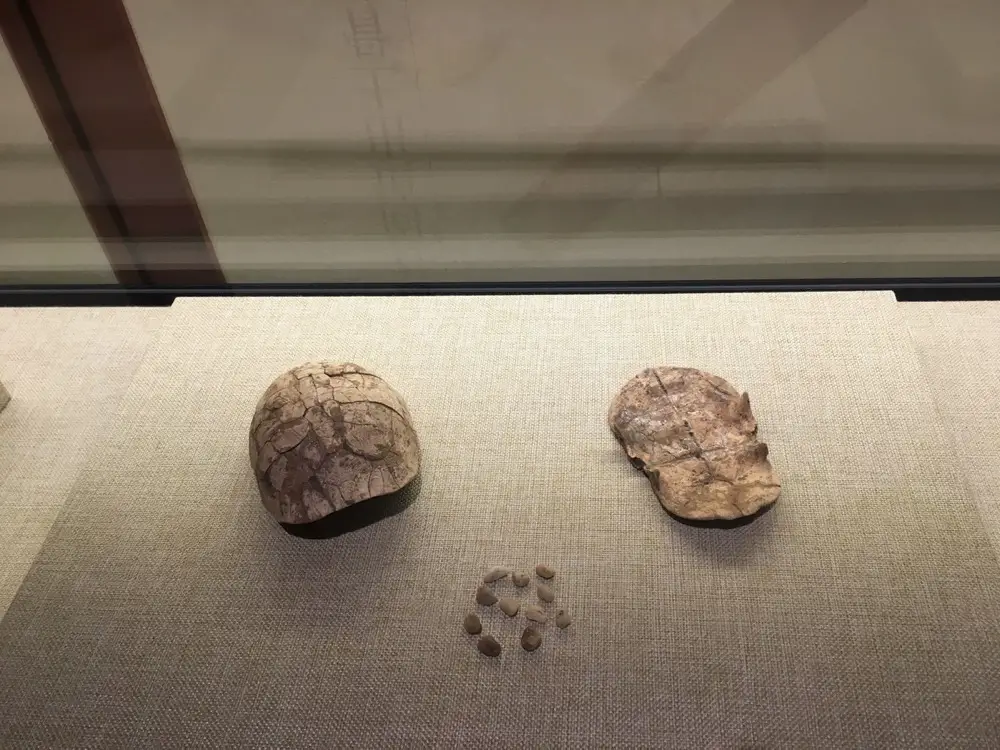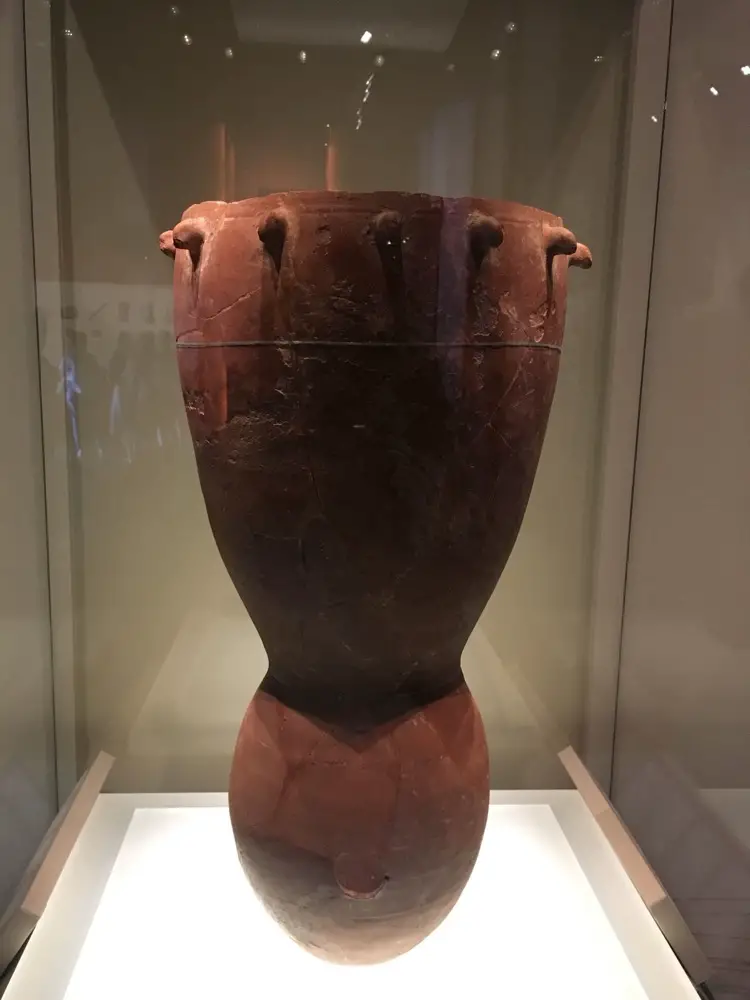Traditional Chinese music is renowned for its rich and diverse array of instruments, and percussion instruments play a vital role in creating the rhythmic foundation of this ancient musical tradition. From grand orchestral ensembles to folk performances, percussion instruments in China add depth, energy, and cultural significance to the music.
what are traditional Chinese percussion instruments?
Percussion instruments, also known as “strike instruments,” produce sound by striking the instrument itself. Some percussion instruments have fixed pitches, such as gongs and chimes, while others have indefinite pitches, such as clappers, clappers, hand drums, waist drums, and tambourines. If we classify percussion instruments based on their sound-producing bodies, they can be divided into two categories:
- “Membrane instruments,” also known as “membranophones,” produce sound by striking the membrane or skin covering the instrument. Examples include various types of drums.
- “Body instruments” produce sound by striking the body of the instrument itself. Examples include bells, wooden fish, various types of gongs, cymbals, and bells.
Most percussion instruments have a definite pitch, even drums have a specific pitch. However, the classification of percussion instruments generally depends on whether the instrument has a definite pitch. Instruments such as timpani, xylophone, marimba, vibraphone, bells, tubular bells, cymbals, and glockenspiel have specific pitches. Instruments such as snare drums, bass drums, sand hammers, clappers, mallets, cowbells, suspended cymbals, shakers, guiro, spoons, wooden fish, tom-toms, triangle, vibraslap, washboard, whip, and Southern clappers generally do not have a definite pitch. However, in some cases, percussionists determine the pitch of their drums before recording or performing specific compositions. Gongs can have both definite and indefinite pitches, although Western gongs typically do not have a definite pitch. Suspended cymbals can also have a definite pitch, but they are rarely seen.
Additionally, percussion instruments can be categorized as either “membranophones” or “idiophones.” Membranophones have a membrane or skin covering that produces sound when struck, such as drums. Idiophones can produce sound on their own, such as triangles. Bell drums are examples of instruments that are both membranophones and idiophones.
Overall, percussion instruments are an integral part of Chinese traditional music, providing rhythm, texture, and expressive capabilities. They play a significant role in various musical genres and cultural traditions, showcasing the rich heritage and artistic diversity of Chinese percussion music.
how many traditional Chinese percussion instruments?
Chinese traditional percussion instruments are an important part of Chinese ethnic music, with a long history and rich cultural significance. These instruments come in various types and shapes, each having its unique function and playing style. Let’s explore the different types of traditional Chinese percussion instruments together.
How many types of traditional Chinese percussion instruments are there?
Based on the performance characteristics, ethnic percussion instruments in China can be divided into four categories: drum, gong, cymbal, and clapper.
Drum (鼓类): Drums are one of the oldest instruments in China. There are various types of drums in Chinese ethnic music, including yaogu, liangzhanggu, yugu, tonggu, huapenggu, datanggu, dagu, shugu, diangu, zhangu, banggu, paigu, qingu, etc. Drums are struck with drumsticks or hands and usually have a double-sided structure with a tightly stretched membrane or one side of a cylindrical drum body.

Gong (锣类): Gong percussion instruments can be classified into three types: qiluo, wuluo, and tuluo. Large gongs and small gongs used in Beijing Opera and other traditional operas are qiluo. The douluo used in Chaozhou drum and gong ensembles belongs to the wuluo category. The tiluo is found in some ethnic groups in Southwest China. In addition to these distinct types, there are also combinations such as bianluo, shimenluo, yunluo, and more.

Cymbal (钹类): Cymbals are struck idiophones made of resonant bronze. They are simple in construction and widely used in local music and orchestras, as well as popular among certain ethnic groups. There are different types of cymbals based on size, weight, and other factors, including shuangguangbo, shuibo, jingbo, and xiaobo. Xiaobo and jingbo have higher pitches and are often used in martial scenes or accompanying wind and percussion music in local operas like Beijing Opera. Shuangguangbo and shuibo have lower pitches and are commonly used in literary performances, often paired with huyinluo or zhongtangluo.

Clapper (板类): Clapper percussion instruments mainly refer to wooden percussion instruments with different shapes. They are a distinctive part of percussion instruments and play an essential role in certain music genres. Some examples include paiban, muyu, bangzi, zhuban, sikuai wajianban, and sibao.
traditional Chinese percussion instruments history and Origin
Chinese ethnic percussion instruments have a history of over 6,000 years and have continuously evolved and assimilated with other cultures throughout history.
Development of Chinese Ethnic Percussion in Ancient Times
Chinese ethnic percussion instruments are an essential part of traditional Chinese music. Throughout history, these instruments have been widely used in military, ritual, romantic, and folk contexts. Ancient Chinese texts, such as “Gouzi Yibing” (Discourses of the States), mentioned phrases like “advance upon hearing drums, retreat upon hearing gongs.” These idioms vividly describe the role of percussion instruments in ancient warfare. The “Book of Songs” also mentions the use of percussion instruments in various aspects of ancient people’s lives. The ancient origins of Chinese ethnic percussion can be traced back to the Neolithic period, where people already knew how to make percussion instruments like clay drums and stone chimes. In 1962, the Jiahu site in Henan Province yielded Jiahu bone flutes, primitive percussion instruments made from tortoise shells, dating back 8,000 years. Archaeologists later discovered red pottery drums and painted pottery drums dating back over 6,000 years at the Dazhang site in Linru, Henan Province. Furthermore, the depiction of percussion instruments in painted pottery vessels found in Datong County, Qinghai Province, further confirms their usage in primitive music and dance activities.
During the Shang and Zhou dynasties, as bronze-casting techniques advanced, percussion instruments entered a new stage of development. They were used in a wider range of applications, and their materials transitioned from earthenware and stone to bronze and jade. For example, the Erlitou culture site in Henan Province unearthed winged bronze bells from the Xia Dynasty, with jade tongues producing clear and resonant sounds. In the Shang Dynasty, intricately decorated bronze raos (small bells) emerged, and their combined pitches formed a pentatonic scale. Many percussion instruments of the Western Zhou Dynasty, such as bianling (stone chimes), bianzhong (bronze bells), tongzhong (bronze chimes), and tonggu (bronze drums), were predominantly made of bronze, demonstrating the advanced bronze-casting technology of the time. In 1978, the tomb of Marquis Yi of Zeng in Suixian County, Hubei Province, revealed a large ensemble of bells and drums, showcasing the highly developed craftsmanship of bronze percussion instrument production at that time. Among the 124 musical instruments found, 100 were percussion instruments, accounting for 81% of the total. The majority consisted of bianzhong and bianxin (small bianzhong). The collection included 64 bianzhong, comprising 19 button-shaped bells and 45 round-shaped bells, with the largest bell reaching a height of 1.534 meters and weighing 203.6 kilograms. Other percussion instruments found included 32 bian (small bianzhong), a yongzhong (large bell), jianggu (drums), xiaobian gu (small bian drum), youbing gu (drum with a handle), and daihuan bian gu (drum with a ringed edge). Together with instruments like qin (zither), xiao (vertical flute), sheng (mouth organ), and se (plucked zither), they formed a massive ensemble known as the bell and drum orchestra. The Zenghouyi bianzhong had a complete twelve-tone scale, with each bianzhong capable of producing two pitches. The range spanned five octaves, and the scale was identical to the C major scale, allowing for the performance of pentatonic, hexatonic, and heptatonic scales. The bianzhong were arranged in two rows, and the chromatic arrangement spanning over three octaves was played in close coordination with the bianzhong. The extensive lineup and complete tonal range of the Zenghouyi bianzhong further demonstrated the important role of percussion music in the social life of that time.
Following the Sui and Tang dynasties, with the integration and exchange of Central Plains culture with external cultures, numerous new percussion instruments emerged or were introduced. The jiegu (Jiahu drum) from the Western Regions (Central Asia) spread to the Central Plains and became popular in the court and among the common people, rapidly developing into a prevalent percussion instrument of that time. Emperor Xuanzong of Tang even personally composed over ten solo pieces for the jiegu, some of which are still preserved today. During the Tang Dynasty, a Chinese percussion system primarily consisting of drums, gongs, and cymbals began to take shape and has been used to the present day. From the Song Dynasty to the Ming and Qing Dynasties, percussion music gradually fused with various forms of music, such as opera, storytelling, instrumental music, and dance, giving rise to many distinctive genres and becoming an important part of Chinese ethnic music.
first percussion instruments in China
Turtle Shell Rattle (9000-7000 years ago)
The turtle shell rattle is a common pottery sound-producing instrument found in Neolithic sites. It consists of a pottery vessel filled with clay pellets or stones, producing sound when shaken. Turtle shell rattles were unearthed at the Jiahu site and were believed to be used in religious rituals and dances, hung on the bodies or limbs of dancers. These are the earliest known rattles discovered in China to date, holding significant importance in exploring the origins of Chinese musical civilization.

Red Pottery Drum (7000-5000 years ago)
The red pottery drum is characterized by a rim decorated with tooth-shaped inverted hooks, which were used for fastening and stretching the leather. The small circular holes on the lower part facilitate the transmission of sound. According to accounts, when the drum’s leather covering was restored, it produced vibrant and resonant sounds, resembling today’s wooden drums. However, some scholars argue that this artifact had a multifunctional role, including being used as a funerary container for infant bodies.

what are traditional Chinese percussion instruments made of?
In percussion instruments, common materials include wood, metal, leather, and plastic. Here are some commonly used materials in percussion instruments:
Wood:
Wood is a common material used in percussion instruments such as drums and xylophones. It can produce solid and enduring sounds while also being capable of producing soft and warm tones. Different types of wood can also impact the resulting sound. For example, rosewood, locust wood, and others have different textures and densities, resulting in distinct sounds.
Metal:
Metal is a very hard material used in percussion instruments like cymbals, bells, and gongs. Due to its hardness, metal instruments can produce bright and crisp sounds, as well as heavy and powerful tones. Different types of metal, such as copper, aluminum, and steel, can also affect the resulting sound. For instance, copper instruments can produce warm and deep sounds, while steel instruments can produce sharp and clear tones. Ancient Chinese percussion instruments were often made of bronze or iron.
Leather:
Leather is a material made from animal skin and is commonly used in percussion instruments like drums and tambourines. Leather can produce rich and versatile sounds, ranging from soft and warm tones to bright and sharp notes. The type of animal skin used can also impact the resulting sound. For example, the texture and thickness of sheepskin or cowskin, which are often used for drumheads, can create different sounds.
Stone:
The most typical stone percussion instrument is the lithophone, an ancient stone percussion instrument. The history of lithophones dates back to ancient times when people would strike stones while singing and dancing, evolving into the lithophone we know today.
Silk:
Silk instruments refer to instruments made with silk strings, such as plucked instruments. Players sit quietly in front of the instrument, plucking the strings, giving a comfortable and serene feeling. Some percussion instruments are also made of silk.
Bamboo percussion instruments are made from bamboo, such as clappers.
Bone:
The turtle shell rattle might have been used as a musical instrument in religious rituals, held or worn by shamans, producing rhythmic sounds along with the movements of their hands and bodies. Like the Jiahu bone flute, it is one of the earliest discovered musical instruments in China.
Ceramic:
In Shaanxi, a giant pottery drum dating back over 4,000 years has been unearthed. Experts claim it is the largest pottery drum discovered in China to date, with significant value for studying the origin of drums and ancient ritual culture.
The pottery drum resembles a large water jar, with a diameter of approximately 48 centimeters, height of 90 centimeters, and belly diameter of 65 centimeters. It features 14 tongue-shaped ear projections on the outer rim, used to secure the cowhide, and three sound holes with a diameter of about 6 centimeters on the drum body. Archaeologists placed a large cowhide on it and struck it, resulting in a deep and awe-inspiring sound that reverberated with a lasting resonance.
Although smaller pottery drums were previously discovered in the Yangtze River and lower Yellow River regions, they were mistakenly identified as pottery jars. Later, the pottery drum was confirmed as a tool used to produce vocal music, revealing the initial form of ancient ceremonial music culture.
what are traditional Chinese percussion instruments used for?
Ancient Chinese percussion instruments mainly include drums, cymbals, and bells. According to historical records, the earliest percussion instrument in China was the drum, which is said to have evolved from the nine tripods during the time of the Yellow Emperor. There were many types of drums in ancient times, such as vomiting drums, shattered drums, big drums, and small drums. Besides being used for entertainment, drums were also used in military and religious ceremonies. For example, many drums were found among the musical instruments unearthed from the Terracotta Army of Qin, indicating that drums were indispensable instruments in ancient military settings.
Percussion instruments are a type of musical instrument that produces sound through striking or hitting. In ancient times, due to their unique sonic effects, percussion instruments were widely used in folk music, sacrificial activities, religious ceremonies, martial arts performances, and various other fields.
Drum
The drum is one of the most common percussion instruments in traditional Chinese music. According to historical records, the earliest drum in China was the “gua drum” from the Western Zhou Dynasty, used in sacrificial activities. Over time, drums gradually evolved into various forms such as skin drums, bamboo drums, wooden drums, and bronze drums. In folk music, drums are widely used in occasions such as weddings, funerals, celebrations, and festivals.
Cymbals
Cymbals are percussion instruments made of two thin metal plates. They produce a crisp “ding-dang” sound and are commonly used in classical music and modern orchestras. In ancient China, cymbals were widely used in military bands and court music as powerful rhythm instruments.
Bells
Bells are instruments composed of two similar pieces resembling cymbals. They produce deep and powerful sounds and are commonly used in classical music and folk music. In ancient China, bells were frequently used in court orchestras and bronze drum lion dance performances, creating a majestic and powerful sonic effect in coordination with drums, gongs, cymbals, and other percussion instruments.
Gong
The gong is a heavy and sonorous percussion instrument. In traditional Chinese culture, gongs are widely used in martial arts performances, religious ceremonies, and folk celebrations. In ancient China, there were many types of gongs, including bamboo-frame gongs, sand gongs, and bronze gongs, each with its unique sound and purpose.
Woodblock
The woodblock is a percussion instrument made of wood. It has a square-shaped appearance with two carved indentations. When struck with a hand or stick, it produces a monotonous and distinct sound. In ancient China, woodblocks were commonly used in Buddhist, Taoist, and folk sacrificial activities as important wooden striking instruments.
In summary, there were a wide variety of percussion instruments in ancient times, including drums, cymbals, bells, gongs, and woodblocks, among others. Each instrument had its unique sonic effects and purposes, and they were widely used in ancient folk music, sacrificial ceremonies, religious activities, and martial arts performances. These percussion instruments not only formed an integral part of Chinese traditional culture but also demonstrated people’s boundless love and creativity in music and art.
Chinese percussion instruments list
Traditional Chinese percussion instruments are an essential part of Chinese music culture, with many of these instruments having been passed down for thousands of years. These percussion instruments can be played solo or in ensemble with other instruments, and they possess unique tones and playing techniques. Here is a comprehensive list of traditional Chinese percussion instruments:
Dagu (大鼓): Refers to a round drum made of cowhide or dog skin. It is commonly used in Chinese folk music.
Xiaogu (小鼓): Used in conjunction with the dagu to play rhythms and beats.
Bangzi gu (梆子鼓): A double-sided drum with two drumsticks that can produce different notes and rhythms when struck on either side.
Yuanchui (圆锤): A percussion instrument played with two small hammers, often performed together with the dagu and xiaosuona.
Daji yuegu (打击乐鼓): A percussion instrument played with small hammers, widely used in opera, music, and festive activities.
Shougu (手鼓): A handheld percussion instrument consisting of a small drum and a handle, used to play various melodies and rhythms.
Tonggu (铜鼓): A percussion instrument made of bronze, commonly used in sacrificial and celebratory events.
Fenghuang luo (凤凰锣): A large circular bronze gong commonly used in opera, music, and celebratory activities.
Xiaohulu (小葫芦): A handheld percussion instrument consisting of two small gourds, widely used in folk music and dance.
Tongbo (铜钹): A round cymbal made of bronze, often used in sacrificial and celebratory events.
Nüzi dabo (女子大钹): A large circular bronze cymbal usually played by women, widely used in opera and musical performances.
Shoubo (手钹): A cymbal played by hand, often performed together with other percussion instruments.
Muyu (木鱼): A handheld percussion instrument consisting of two wooden semicircular pieces used to play rhythmic notes.
Tongluo (铜锣): A round gong made of bronze, frequently used in religious and musical activities.
Bangdi (梆笛): A wind instrument composed of a double-ended flute and a metal tube, widely used in Chinese revolutionary songs and folk music.
Ban (板): Typically made up of three rectangular wooden boards. The front two boards are bound together, while the back is a single board, connected with cloth straps for striking and producing sound. It is mainly used for accompaniment in opera and instrumental ensembles, often combined with ban gu.
Bajiaogu (八角鼓): Named after its octagonal drum frame, it is a percussion instrument commonly used by ethnic groups such as Manchu, Han, and Bai. According to legend, it was made by each leader of the Manchu Eight Banners contributing a piece of fine wood, symbolizing the unity of the banners. The drum body is small and flat, with a red wooden frame and a single-sided covering of python skin or sheepskin. There are windows on each side of the frame, with a pair of copper cymbals attached. During performance, one hand holds the drum, and the other hand strikes the drum while shaking the small cymbals. It is mainly used for accompanying storytelling performances, with the performer singing and playing the bajiaogu simultaneously.
Bangu (板鼓): Shaped like a flat circle with a skin-covered surface, it is also called a single-headed drum. The wooden drum frame is thick and solid, made up of five wooden pieces. The central part of the drum is slightly raised. Beijing Opera and northern Chinese operas use smaller-headed bangu, which produces high-pitched sounds. The southern “Ten-fan Luogu” and Jiangnan silk and bamboo ensembles use larger-headed bangu, which produces a deep and solid sound. During performance, the drum is placed on a wooden stand, tied with ropes, and struck with two drumsticks. In opera orchestras, bangu occupies the position of conductor and lead performer, and the player is called “gushi” or “gulao.”
Yunluo (云锣): Consists of ten small gongs, also known as “ten-face gongs.” The gongs have no centers, and ropes are threaded through small holes on all four sides of each gong to secure them to a wooden frame. The ten-face gongs are of equal size, but their pitch and timbre vary due to differences in thickness. They are commonly used to play the main melody in Su-style wind and percussion music, Ten-fan Luogu, and Xi’an drum music. Yunluo has a clear and melodious tone, full of color.
Pengling (碰铃): Also known as “lingbo,” it is a struck idiophone played in ancient times. It is a mutual-striking instrument used by various ethnic groups such as Manchu, Mongolian, Tibetan, Naxi, and Han. It is also known as “zhuangling,” “shuangqing,” “shengsheng,” “shuishui,” and other names in folk traditions, while in Shaanxi, it is called “shuai zi” or simply “ling.” It is widely used as a percussion instrument in Chinese song and dance, opera music accompaniment, and folk instrumental ensembles. It is also called “shuangqing” or “lingbo.”
Fou (缶): Fou is a Chinese pottery instrument, originally a type of vessel similar to a jar or bowl. It was used to hold water or wine in ancient times. The magnificent 2008 Fou formation during the opening ceremony of the Beijing Olympics sounded like drumming, and the design of this instrument was derived from a bronze fou unearthed from the 1978 Tomb of Marquis Yi of Zeng in Suizhou, Hubei Province.
Bianzhong (编钟): A large ancient Chinese percussion instrument, the bianzhong originated during the Zhou Dynasty and flourished during the Spring and Autumn Period and the Warring States Period until the Qin and Han Dynasties. China is the earliest country to manufacture and use musical bells. It is made of cast bronze and consists of a series of differently sized flat round bells arranged in order of pitch on a massive frame. The bronze bells are struck using wooden hammers shaped like a square and a long stick, producing different musical tones. With each bell having a distinct pitch, playing the bells according to the musical score can create beautiful melodies.
Jiao (角): Jiao is a unique percussion instrument found only in Chinese culture. It is an ancient instrument made from buffalo horn or other animal horns. It has a spiral shape and produces a loud and vibrant sound, reflecting its strong ethnic characteristics. Jiao is typically used in ethnic orchestras or during opera performances.
Gang (缸): Gang is a seemingly simple but uniquely sounding percussion instrument, also known as a “water jar.” It is often made of pottery and has a cylindrical or oval shape. Due to the different shapes, gang produces various tones. Gang is commonly used as an accompanying instrument in traditional music, complementing other percussion instruments such as drums and cymbals.
These traditional Chinese percussion instruments play a significant role in the preservation of music, cultural exchange, and international communication. Today, there is a revival of interest in Chinese traditional percussion instruments, with an increasing number of people paying attention to and learning these unique instruments, promoting the inheritance and development of Chinese music and culture.
In modern times, traditional Chinese percussion instruments continue to be cherished and performed in various musical genres, including traditional Chinese music, contemporary compositions, and cross-cultural collaborations. They not only preserve the rich cultural heritage but also inspire new generations of musicians to explore and innovate with their sounds and rhythms.
As China’s cultural influence continues to expand globally, traditional Chinese percussion instruments play a crucial role in promoting cultural exchange and fostering appreciation for the depth and beauty of Chinese music. They serve as a bridge that connects the past with the present, allowing people from different backgrounds to experience the vibrant and captivating world of Chinese percussion.
In conclusion, traditional Chinese percussion instruments are an essential component of Chinese music, adding rhythm, energy, and cultural significance. From drums and cymbals to gongs and bells, each instrument brings its unique sound and contributes to the diverse tapestry of Chinese musical traditions. As we continue to celebrate and explore the wonders of traditional Chinese music, let us appreciate and embrace the vibrant world of Chinese percussion instruments.